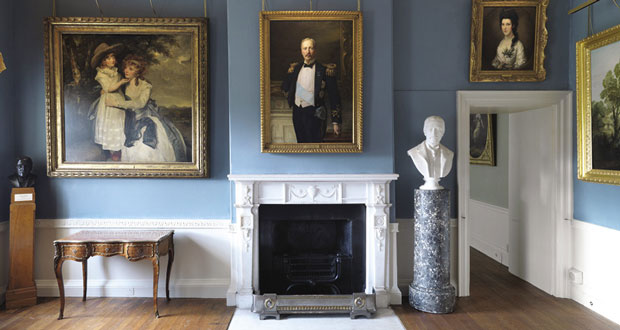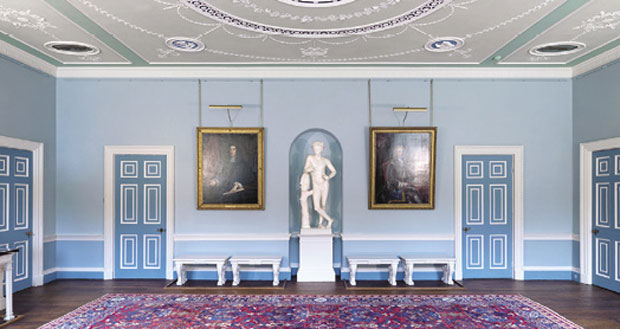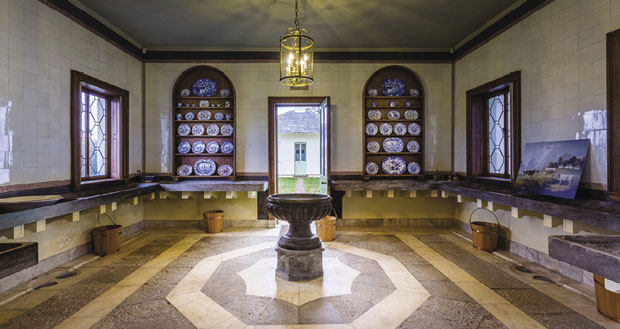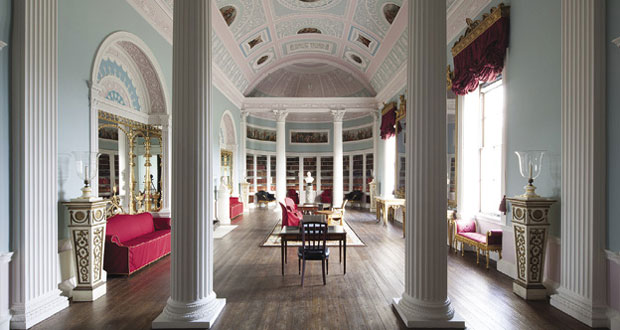ENERGY SAVING
English Heritage’s annual budget for maintaining its buildings is around £15 million, so as well as helping protect the building’s assets the pilot also aimed to help the charity meet its objective to achieve a 25 per cent reduction in operating costs.
“These buildings are incredibly expensive to maintain,” says Hartley, “from the cost of keeping the lights, gas and electrics on to the sheer maintenance necessary.”
The pilot has increased the understanding of how energy is utilised within the site and improved the level of predictive maintenance. This ‘predict and prevent’ approach is vital in increasing an understanding of how key systems, assets and components are utilised within such a complex property. Shepherd can now provide information across the estate which is accessible to a layman on why a particular system needs to be replaced, instead of waiting for it to break and avoiding disruption and reputational damage especially in the core business of the property.
Says Chadwick: “It’s about providing real time information that creates new knowledge for clients to be able to understand what exactly is going on rather than organising one off warranty or maintenance visits. It’s the predictive element which tells you when is the optimal time to replace equipment which derogates over its’ lifecycle.
“From an energy perspective it’s been quite interesting as the largest draw of energy in Kenwood House was the kitchen. The facility had a lot of equipment which was running 24/7 so we were able to advise the building manager what should be shut down regularly. Then the pandemic hit and it was a case of making sure every asset was monitored during the lockdown, which also meant lessening the risk of fire or damage.”
“During the pandemic the on-call engineer and security guard could be kept informed when things needed to be done and where plant had been left running, so Shepherd became the 24/7 eyes and ears onsite. Someone would always know the status of the entire property.”
SUCCESS OF PILOT
Although the pilot was launched prior to the pandemic, the technology was already in place to monitor Kenwood House throughout lockdown, which included charting the effects of not having any visitors on the property.
Explains Duncan-Finn: “It’s vital that we monitor the condition of our historic places and the environment the collection lives in – during lockdown it meant we could go down to a skeleton staff while the house has been closed, as with the IoT remote sensors inside the house we could still continue real-time monitoring, as if there was a full team of staff in the house.”
Adds Hartley: “We know from other places that a lack of people can have a detrimental effect on some collections. Because you’ve normally got thousands of people passing through a building giving off moisture or opening doors, once you remove this it could result in an unbalanced environment.
“While our objectives from the pilot perspective was to understand the data and hit that predict and prevent target, we had lockdown which went from monitoring a busy to an empty building. But we went into this as a ‘sandbox environment’ to learn as much as we can, take those learnings and turn that into some form of scalable proposition for the wider heritage sector and customer niches.
“We’ve been able to achieve that because we’ve learned a lot from the work, how particular sensors were installed, what can work and what doesn’t work, and we’ve built that into a proposition that we hope will resonate.”
As a result, English Heritage is now expanding the pilot to monitor energy consumption and identify efficiencies at nine other energy-intensive historic sites across the country including Dover Castle, Wrest Park and Brodsworth House.
Using the lessons from the pilot, English Heritage will be able to monitor its buildings much more closely to mitigate risk, streamline preventative maintenance and understand energy usage.
Says Hartley: “Energy management is an issue with heritage buildings. You can’t double glaze them or stick solar panels everywhere so they represent a different challenge to other buildings. If you can’t turn it into an eco-building you have to find ways to minimise the outgoings through that data insight.”
Adds Chadwick: “English Heritage already had smart meters, but that wasn’t giving them enough real time understanding of building energy use. Now, working with the properties director we can offer a solution where he doesn’t have to visit each site but can access the data on a Shepherd module which we call ‘energy analytics’ and see why certain buildings cost more than the rest of the portfolio.
“We’ll also be able to benchmark each property against each other to understand why one performs better than the other. What are they doing differently and what are the shared learnings? Through this intelligence property data can be shared across the portfolio and used to help all of English Heritage properties improve their utilisation.”
Concludes Duncan-Finn: “The analytical insight is assisting us in our objective to reduce our operating costs by a quarter, and all the money we’re saving is being used for conservation and operational budgets. The data insight we had has enabled us to develop a more focused/informed planned preventive maintenance regime alongside a targeted investment programme in the replacement of ageing mechanical infrastructure, as we now have a greater insight about the opportune time to invest in replacement plants.
“It will also help us with procuring specialists with targeted experience relevant to the energy saving objective we’re hoping to achieve.”
www.ecclesiastical.com
https://shprd.com
All images © English Heritage









